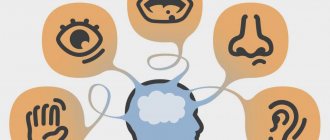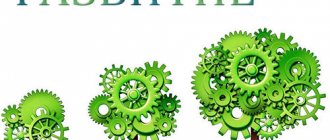Now mnemonics for memory development are used everywhere: in kindergartens, schools, universities, trainings, educational courses. Many believe that these are the latest techniques to avoid senility and excessive forgetfulness. However, few people know that this is an ancient Greek word (derived from the name of the goddess of memory Mnemosyne) and a science that Aristotle, Giordano Bruno, Alexander the Great, Julius Caesar, and Napoleon Bonaparte were fond of. So what are these methods of memorizing information, how effective are they in practice, and how to master them?
What it is
Mnemonics, or mnemonics, is a science that teaches the art of memorization using certain techniques and methods. Its task is to improve memory through associations. She rejects rote learning, which has already shown its ineffectiveness. Which adult remembers Tatyana's letter to Onegin by heart? Units! And all because this information has no significance for the majority and is not tied to objects or sensations.
Mnemonics is a technique for memorizing information when various objects and facts are closely associated with ideas in a person’s head. They can be visual, auditory or kinesthetic. This simplifies the memorization process and increases memory capacity. The simplest example: from childhood, everyone remembers the order in which the colors in the rainbow are located, thanks to the saying about the hunter and the pheasant. The initial letter of each color is associated with the initial letter of the words in that phrase. This is one of the main techniques of mnemonics. In this way, any information can be imprinted in memory.
In mnemonics, two objects of memorization are used - numbers and words. Even if the task is to remember a picture, it must first be mentally transformed through associations into a list or some kind of phrase.
Mnemonics techniques
To understand the basics of mnemonics, you first need to get acquainted with its main tools - techniques that allow you to remember almost any information.
By initial letters
We have already seen one example of this technique above. Used if you need to remember several words in a certain sequence (colors in a rainbow, planets by distance from the Sun). Their initial letters are taken and a phrase is invented that is completely unrelated to their topic, but the words in it begin with the same letters. When you need to reproduce information, you first remember the composed sentence, which serves as an excellent hint. There are ready-made templates for similar phrases for each individual sequence (examples will be below), but you can create your own.
Rhymes
Rhyming as a mnemonic technique is suitable for developing memory in creative people who love poetry and successfully rhyme words. Or you can use already prepared templates, as in the previous case.
Consonances
When you need to remember complex, long terms or foreign words, simple and understandable consonances are invented for them and stored in memory. For example, in medicine there are the concepts of “supination” and “pronation”, which refer to movements of the hands in different directions. In order not to forget them, students, future doctors, are offered similar sound equivalents - “she carried soup and spilled it.”
Visualization
A technique based specifically on visual associations. To remember any information, a certain picture is created in the head. For example, it’s easier for women to learn car brands: Jaguar is a big wild spotted cat, Audi is wedding rings, etc. This technique is especially good for developing visual memory.
Visual associations
Spatial imagination
The famous method of Cicero, which once again proves how ancient science mnemonics is. A person who puts this technique into practice treats his own memory as a separate space. It could be a museum, a library, storage facilities, or just a room. It has many shelves, chests, and compartments. It is recommended to present the memorized information in the form of an expensive vase or an ancient scroll and put it away in a certain place. When you need to reproduce it, an invented association arises in your mind, and it can be “extracted” from one or another suitcase without any problems.
Visual memory
A widely used method by Aivazovsky, which involves memorizing details. Another mnemonic technique that works to develop primarily visual and even photographic memory. One of the exercises is to closely but imperceptibly look at your interlocutor and then accurately reproduce him from memory, down to every button and mole.
Digital algorithms
These techniques are designed primarily to develop the memory of scientists and people associated with the exact sciences. Due to the nature of their work, they have to memorize long formulas and numbers. This can be done quite easily if you find some patterns or correlate them with familiar, memorable dates.
Remembering names and faces
Very often we need to remember people we just met. We all tend to be kind to those who remember our name. In order to quickly and accurately remember the names and faces of people, there are the following mnemonics.
Show interest in the person , chat a little, addressing him by name. There are several memorization rules at work here. Firstly, you show interest in the person, and also receive information about him, which can serve as the basis for building associations with him. Secondly, you repeat his name several times, which also improves memorization.
Association with another person well known to you with the same name. For example, many of us will easily remember a person's name if he is your namesake. It is also easy to remember the names of people who coincide with the names of your parents and good friends. But even if you don’t know the name of the person you need to remember, try to remember famous personalities with the same names: actors, politicians, musicians.
Selection of other modifications of his name. For example, the name Alexander has several modifications: Sasha, San, Shura. Once the person has introduced himself, try silently naming several modifications of his name.
Writing the name. Think about how a person's name is written - imagine it visually. How many letters are there in this name? What is the first letter? The answers to these questions will further cement the image of the person’s name in your visual perception. If possible, you can even write the person's name on the paper to enhance the perception.
Remembering last names. You can remember last names using mnemonic techniques based on visual associations. You need to start by searching for a mental replacement or modification of the surname. For example, my surname Buyanov can be associated with the island of Buyan from children's fairy tales, as well as with a violent temperament. Then some noticeable feature of the person is selected, for example, a facial feature or character trait (which is more suitable for the Buyanov surname), which needs to be tied to the selected surname association.
Try to put these methods into practice and take training on remembering faces and names using mnemonics:
Statistics Full screen
Methods
Since mnemonics did not appear yesterday, it includes various techniques, each of which offers the use of its own methods of memorizing information and memory training. Beginners may find them too complicated. In fact, if you understand their algorithm and master at least one, it will greatly simplify your life. We bring to your attention some of the most famous mnemonic systems.
Alphanumeric alphabet
The abbreviated name is CBA. Author unknown.
A technique according to which each number is associated with a specific letter through visual or auditory association. There are clearly written alphabets that need to be memorized and put into practice. You can create your own.
Alphanumeric code
The abbreviated name is BCC. The author is V. Kozarenko, a well-known specialist in mnemonics, who has written many textbooks on it.
The system of memorization and memory development proposed by Kozarenko is similar to the previous one. But here, first you just need to memorize the correspondence between numbers and paired consonant letters without any associations, and then use them in life. His BCC looks like this:
- 0 — m/n;
- 1 - g/f;
- 2 - d/t;
- 3 - farm;
- 4 - h/sh;
- 5 — p/b;
- 6 - sh/l;
- 7 — s/z;
- 8 - v/f;
- 9 - r/ts.
How to use. For example, you keep track of your income and expenses, you spent 2,056 rubles in a store, and you need to remember it in order to record it at home. You come up with a word that has a consonant corresponding to each number, and make a sentence out of them. 2 - children, 0 - ice cream, 5 - ice cream, 6 - chocolate. The children ate ice cream, it was ice cream and chocolate. There is no need to set a goal to come up with something conscious and logical. The more unusual the phrase, the better it will be remembered.
Other methods are also used in mnemonics:
- Fractional Number Code (FNC) - for those who deal with mathematics.
- Development of visual memory through visual associations. For example, each line of a memorized poem (a number in a formula) is “nailed” on a particular house (or tree) on the way to work or to the store and is repeated every time you walk along it.
- Method of auxiliary objects: if you put your finger on the Moon, you can understand whether it is growing or aging, depending on the resulting letter (P or S).
- Development of sound memory: chants (for learning Morse code), rhymes (“One Hundred Chinese Surnames”, Perelman’s dialogue about circles for memorizing the number Pi).
There are a large number of memory systems in mnemonics. You need to choose what suits you. If you have nothing to do with mathematics, KDC and Perelman’s dialogue are of no use to you. Look for those techniques that are relevant specifically to your life. Also focus on your memory type. You can first begin to perfect the one that prevails in you, and then develop the one that is worse.
Kinds
If you plan to use mnemonics, keep one important point in mind. This is a whole science that has developed over several centuries. It has a rich history of development and there are many directions in it. In the same books dedicated to this art, they are often intertwined with each other. The authors offer sets of exercises, some of which relate to folk techniques, others to the classics. Such heterogeneity leads to the absence of a system.
Don't step on this rake. Choose one of the areas in accordance with your goals, objectives and individual characteristics and master it first. If things go well, then continue practicing using a different method.
Folk
The techniques of folk mnemonics are familiar to most people, as they have become firmly established in their lives, and many do not even suspect it. These are those rhymes with exceptions to the rules that they learned at school, the phrase about the hunter and the pheasant with the colors of the rainbow that set the teeth on edge. Road signs on the street, symbols on a computer desktop, the alphabet - these are all codes for developing memory in order to better remember and reproduce the necessary information faster.
Acrostic
Someone comes up with their own systems for learning a foreign language or chemical reactions, telephone numbers or significant dates - all this reflects the essence of everyday, or folk, mnemonics.
Classical
This is the very first system of mnemonics that has come down to us in written form. It dates back to 86 BC. e. At that time it was an integral part of rhetoric. Speakers used it to deliver long speeches accurately and without hesitation.
One of the most striking examples is Cicero's method. His opponent was Quintilian; he advocated for those people who had poorly developed visual and associative memory and who could not use Cicero’s technique. Quintilian proposed other alternatives to storing information, but was unable to formalize them into a separate system. However, it was they who later became the basis for the development of pedagogical mnemonics.
Pedagogical
The antipode of classical mnemonics. It finally took shape only in the 16th century, thanks to the Cambridge University teacher P. Ramus. This direction was closer to ordinary people, so it became widespread. There was no need to make complex visual associations here. Her main techniques were:
- repeated reading of the text and repeating it out loud;
- taking notes;
- redrawing illustrations;
- play activities;
- creation of didactics.
Methods of pedagogical mnemonics are still used in the modern education system.
Circus
The second name is variety. A narrow circle of people (it all started with circus troupes) creates its own system for coding the material. Anything can be used: language, gestures, facial expressions, intonation. The task is to transfer information from the assistant to the performer so cunningly that no one notices. These techniques are now actively used by scammers, telepaths, and psychics.
Sports
Since 1997, mnemonics competitions have been held annually in Cambridge. This direction has special specifics. Each participant is a guru in a specific area. Some reproduce binary numbers from memory, others recite poems 300 pages long by heart. As a rule, the winners end up in the Guinness Book of Records. The best in their field are determined by two indicators: memorization speed and volume.
Modern
The main representative of this direction is the Giordano mnemonic system. It is quite complex, based on scientific research in neurobiology about the brain and memory as a higher mental function. Here are just some of its provisions:
- development of electrical (neural) memory;
- mental operation “Connecting images”;
- the concepts of “Memorization Meaning” and “Accurate Information”;
- associations consisting of a foundation and auxiliary elements;
- system of internal stimulation of the cerebral hemispheres;
- multi-level schemes of reference images;
- constant training of memorization skills.
Mnemonic rule for remembering the number of days in a month using your knuckles
Don't remember what happened 5 minutes ago? Our short-term memory is to blame for this. What it is and ways to improve it is in our separate article.
Examples of practical application
Mnemonics are often used to memorize rules, formulas, and numerical values in various sciences. First of all, it's a great memory workout. Secondly, it is ideal for children to fully master the school curriculum in individual subjects. Those who were lucky enough to study with teachers familiar with these methods forever remembered the exception words in the Russian language, the Pythagorean theorem in geometry, and many other truths that ideally everyone should know by heart. If teachers do not have the skills to work with these techniques, parents can use them themselves to help their child learn.
Some of the most striking examples of mnemonic techniques in different academic disciplines will help you.
How to work with them. Almost all of them are based on the techniques of rhyming and consonance. So, all children need to do is memorize funny rhymes - and the rules themselves will be remembered almost for the rest of their lives. You'll see: they will read them to their grandchildren later.
Russian language
Mathematics
Other items
Similar techniques and methods of mnemonics exist for almost all academic disciplines and spheres of life:
- in music - to remember the sequence of notes;
- in traffic rules;
- in military affairs (formulas for hit accuracy taking into account side winds and target speed);
- in the transport sector (colors of navigation lights on board aircraft and ships);
- in telephony (numbers where numbers are replaced by letters corresponding to them on the telephone keypad).
Mnemonics are invaluable when learning a foreign language. It will make the task easier for schoolchildren, students, and adults. The OPSHACOM rule, for example, will make it much easier to understand and remember the canonical order of placing several adjectives before a noun in English.
We learn fun and with pleasure. Chapter for children
Mnemonic tables serve as excellent material and a way to develop coherent speech in children. They have a positive effect on enriching vocabulary, writing stories, and predicting literature. Children who use mnemonics show more stable and better results in guessing and making riddles, memorizing poems and texts.
Use mnemonics in your studies. Parents, master it yourself and together with your child. This will bring you closer together, give you authority, and add play and excitement to your studies. Stop being boring and tedious. The child will be interested in learning. Well, be more creative. Find what interests your child and, based on his interests, act.
For example, if your child spends days playing the computer game “Tanks,” then take advantage of this. Invite him to find out where the battles took place. And, while studying history in this way, teach him, as if casually, mnemotechnical methods for remembering the names of places and dates. Your child will see that studying is not boring, as they are forced to do at school, but is fun, and even something that interests him. And then the process will go even easier.
How to master
Firstly, you can take mnemonics lessons from specialists who are closely involved in applying its systems and techniques in practice. They can be found on the Internet: buy a training course, sign up for an online training, arrange lessons via Skype. There are a huge number of ways to master it.
Secondly, you can learn mnemonics yourself, at home. However, please note that this will be a longer journey than with a specialist. Some techniques may seem too complicated, and then there is a risk of giving up without developing your memory. Sometimes regularity and perseverance are not enough. When there is a teacher, there is a schedule of classes, assignments, etc. But here you only have to rely on self-discipline.
To learn mnemonics yourself, you need to start by choosing:
- directions (it is better for a beginner to choose folk or pedagogical, rather than modern or classical);
- the type of memory you will be developing;
- the technique that you can master best (rhymes, consonances, visual associations);
- the author's system in which you will work.
Next, you need to set aside a specific time for studying. It is best to do this immediately before bed. For beginners, these steps will be enough.
Memorizing foreign languages
Language mnemonics will be useful for memorizing words, expressions, grammatical rules, verb forms, etc.
Method of phonetic associations (MPA). This method appeared due to the fact that in all languages of the world there are words or parts of words that sound the same, but have different meanings. Moreover, in different languages there are words that have a common origin. For example, the word look can be remembered by associating it with the similar-sounding Russian word “onion.” And when cutting an onion, we cannot “look” at it, because our eyes water.
Method of interaction of all sensations (MSI). This mnemonic approach is useful for those who want to become fluent in a foreign language. If words don't come to your mind automatically, you won't be able to speak the language fluently. Therefore, the main thing is not to memorize a foreign word as a translation of a native word, but to immediately associate the foreign word directly with the corresponding concept. To learn the word “cup,” imagine a cup with a handle, and holding the image in your mind, say “cup” several times, trying not to remember the word “cup.”
Try to put these methods into practice and take training on memorizing foreign words using mnemonics:
Statistics Full screen
For different ages
For preschoolers
Mnemonics are actively used by educators and speech therapists for the development of speech in kindergarten with the help of mnemonic squares and mnemonic tracks. First, the child must name what is shown in the picture (visual associations are triggered and at the same time the vocabulary is replenished). Then he composes sentences and entire stories using several illustrations at once (the grammatical speech is enriched). The most complex one in this chain is the mnemonic table, which helps a preschooler learn a full-fledged poem.
For school age children
The education system is the most fertile field for the use of mnemonics. In order to assimilate huge amounts of information on various subjects, consonance and rhyme will be useful for developing the memory of schoolchildren, examples of which are in the tables above. Starting from the age of 10, experts advise parents and teachers to gradually teach children the methods of Cicero and Aivazovsky. You can also use other exercises: creating your own language, developing cuneiform, password recall and others.
For adults
For the development of memory for adults, it is already too late to learn poetry in order to remember the sequence of cases in the Russian language. They need more complex techniques, working with numbers, visual and auditory detail of what is happening. The pinnacle of perfection will be mastering the Giordano system or at least trying to take part in the correspondence round of the mnemonics competition.
Using mnemonics
The secrets of mnemonics are useful to everyone, because with the help of developing intellectual endurance they instill the most important skill - the ability to learn. A preschooler will be able to memorize poems and songs faster and be better prepared for school. Having improved memory and attention, the student will study independently and complete homework faster than his peers. An adult, having mastered technologies for working with information, will be able to master a new profession or regularly improve his skills faster than his colleagues.
In addition, mnemonics keep our brain in good shape, synchronize the hemispheres, and initiate the development of new neural connections, ensuring the prevention of age-related changes. By practicing mnemonics, you develop your imagination and become a more valuable employee because you think outside the box and make creative decisions.
The best books on mnemonics
- Ziganov M. Mnemonics. Memory based on visual thinking.
- Zyablitseva M. A. Instant memorization techniques. Scout mnemonics.
- Kozarenko V. A. Mnemonics - memory development.
- Kurt W. Mnemonics.
- Sheikh-Zade Yu. R. Supermemory is an ancient technique of mnemonics.
If you are faced with the task of developing memory, be sure to use one of the areas of mnemonics. You can start with the simplest techniques, and then understand and master more in-depth and complex ones. You will be surprised at how much information you can own and use it to your advantage.











